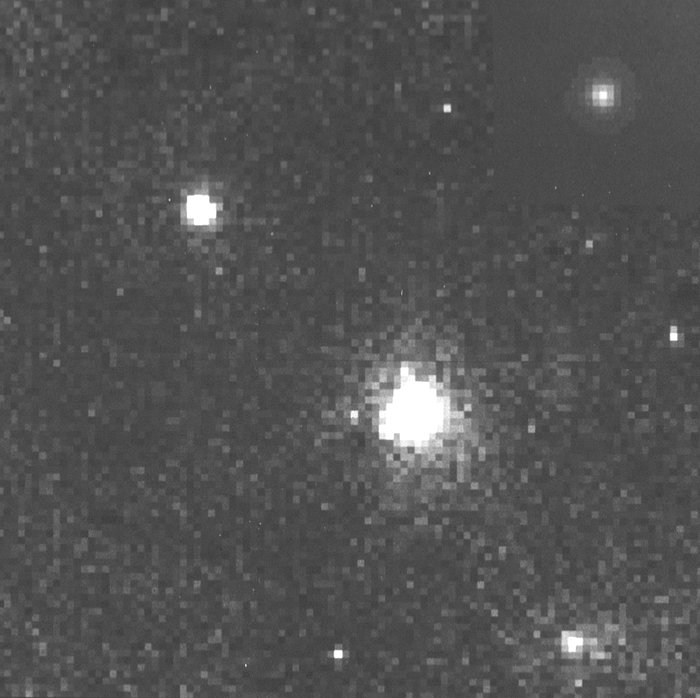Radio galaxy 53W002
This is a small portion of an image taken with NASAESA Hubble Space Telescope href="http://www.spacetelescope.org/about/index.html">HST) Wide Field Planetary camera (WFPC) in WF mode a near-infrared (F785LP) filter, showing the distant radio galaxy 53W002 at lower left. The region shown is a subimage 100 WFC pixels (10.16 arcseconds) on a side. The bright object is a foreground galaxy approximately four times closer. The inset the at upper left shows how a nearby galaxy (M87) believed to be similar to 53W002 would appear at the same distance. The distant galaxy is much brighter, showing the time evolution of the stellar population in these galaxies. It is also almost as compact as M87, suggesting that it has nearly completed its collapse under self-gravity while forming stars. The outer regions of 53W002, faintly visible in this reproduction, have a structure remarkably similar to that of nearby, more dynamically resolved galaxies as well. Together with ground-based spectra and theoretical models, this image suggests that we are seeing a galaxy near the end of its formation phase, and that the galaxies initial collapse coincided with its initial round of star formation. This has long been expected theoretically but has been difficult to show. Less expected is timing; 53W002 started the process much later than many galaxies seen at higher redshift, so that the period of galaxy formation must have been drawn out over several billion years.
Credit:About the Image
About the Object
Colours & filters
| Band | Wavelength | Telescope |
|---|---|---|
| Infrared I | 785 nm |
Hubble Space Telescope
WFPC1 |
